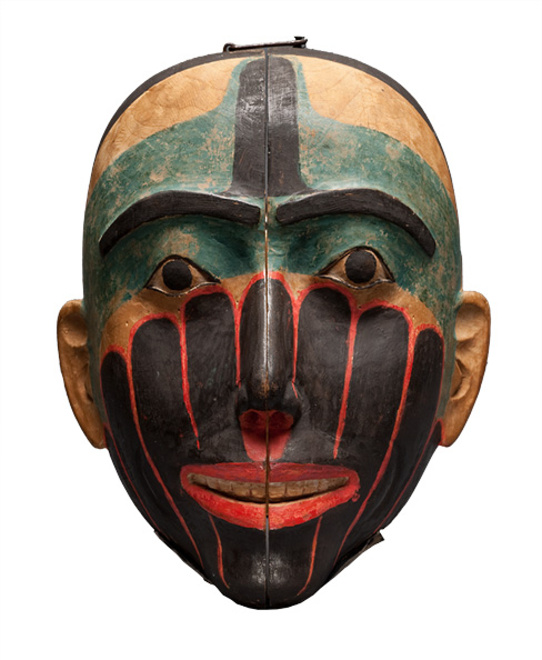
Attributed to Sdiihldaa/Simeon Stilthda (ca. 1799–
1889), Haida
Wood, paint, leather, metal
Collected by Israel W. Powell between 1880 and 1885
Donated by Heber R. Bishop
American Museum of Natural History 16/376
This mask (niijaang.u) originally had two parts: the split outer face of a man, and an inner face representing a woman (lost sometime after it arrived at AMNH). Such mechanical masks usually represent ceremonial transformation— a physical or spiritual change in state. Although Powell identified this mask as a “hermaphrodite,” it more likely signals the change from male to female aspects of a mythical person or spirit being. Scholars have come to attribute this mask to the Haida carver Simeon Stilthda, who was known to have made many items for sale to Euro-Americans (such as portrait masks and shaman figures like the one on exhibit). He produced this mask at a time of great duress in Haida culture due to anti-potlatch laws, drastic population loss and relocation due to disease, and the suppression by missionaries of ritual art practices. Perhaps Stilthda took advantage of the robust tourist and ethnographic markets not only to make a living but also to maintain a material record of Haida visual and ceremonial form—like masks and face paintings— that were threatened with eradication.























